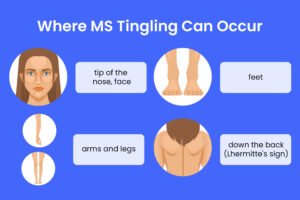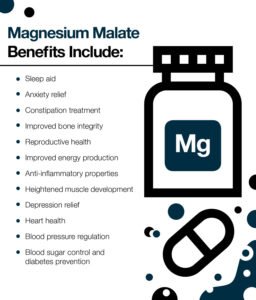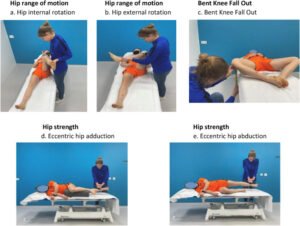Overcoming Speech Impediment_ Symptoms to Treatment
Overcoming Speech Impediments: Symptoms and Treatment Approaches
Read Time: 9 mins
Understanding Speech Impediments: Key Symptoms and Solutions
Speech impediments are conditions that affect an individual’s ability to communicate effectively. These conditions can lead to challenges such as difficulty producing sounds, controlling speech pace or tone, or forming coherent sentences. While speech disorders can arise during childhood or later in adulthood, they can be caused by a variety of factors, including physical trauma, neurological conditions, or anxiety. This article explores common speech disorders, their causes, symptoms, and available treatments.
Common Symptoms of Speech Impediments
Speech disorders can manifest in different ways, depending on the underlying cause. They may be present from childhood or develop later in life due to neurological issues. Two primary types of speech disorders include aphasia and dysarthria.
Aphasia refers to difficulties with language comprehension or the ability to produce the correct words.
Dysarthria involves problems with the articulation and pronunciation of words. These disorders are often associated with neurological conditions such as multiple sclerosis (MS) or autism spectrum disorder (ASD). Symptoms of speech disorders may vary in severity and include:
-
Slurred or slow speech
-
Choppy or stuttering speech
-
Difficulty controlling speech volume
-
Unwillingness to speak
-
Lisping
-
Trembling or shaking in speech
-
Inability to pronounce certain sounds
For those with aphasia, symptoms might include:
-
Speech apraxia (difficulty coordinating speech movements)
-
Difficulty understanding spoken language
-
Inability to use the correct words
-
Inability to repeat phrases
-
Abnormal speech rhythm
Causes of Speech Impediments
Speech difficulties can be linked to developmental disorders that emerge early in childhood or result from traumatic incidents or diseases that occur later in life.
Childhood Causes:
-
Autism Spectrum Disorder: Affects social and communication skills, leading to speech delays or challenges.
-
Cerebral Palsy: Affects muscle control and physical movement, potentially impairing speech.
-
Hearing Loss: Impairs speech development due to limited ability to imitate sounds.
-
Rett Syndrome: A genetic disorder that causes a loss of speech and social skills during early childhood.
-
Metabolic Disorders: Affect the body’s ability to break down nutrients, sometimes causing cognitive and speech delays.
Adult Causes:
-
Traumatic Brain Injury: Can disrupt speech areas of the brain.
-
Stroke: Often leads to aphasia, where speech and comprehension are impaired.
-
Parkinson’s Disease and MS: Both affect motor control and can lead to speech issues.
-
Vocal Changes Due to Aging (Presbyphonia): Age-related changes in the vocal cords may cause speech difficulties.
Managing Speech Impediments: Diagnosis and Treatment
Early diagnosis and intervention are crucial for treating speech disorders. If you or your child are experiencing speech difficulties, it is essential to consult a healthcare professional for a comprehensive evaluation.
Diagnosis Process:
A speech therapist or medical professional will conduct a thorough evaluation, which may include:
-
Medical history and physical examination
-
Brain imaging (CT scans or MRIs) to check for neurological causes
-
Swallowing tests if the condition involves the muscles of the throat
-
Nerve and muscle tests (EMG or NCV) to assess nerve function
Once the underlying cause is identified, treatment plans will focus on addressing both the speech issue and its root cause. For example, if the speech difficulty is due to a stroke, treating the stroke or managing its aftermath would be part of the plan.
Types of Speech Therapy Treatments
Speech therapy is personalized to the individual’s needs. Treatment plans may vary in frequency and duration, depending on the severity and type of speech impairment.
Common Speech Therapy Exercises:
-
Practicing specific sounds or phrases
-
Exercises to improve mouth and tongue movements
-
Techniques for controlling speech pace and rhythm
-
Language practice, such as naming objects or repeating words
Speech therapy aims to improve speech clarity, fluency, and confidence. In some cases, children with significant speech impairments may also receive additional support in school.
Living with Speech Impediments: Building Confidence
While some individuals may experience speech difficulties due to anxiety or social factors, speech therapy can still help in building confidence and improving communication. Consistent therapy and practice can lead to significant improvements in speech ability.
Important Considerations:
-
Therapy may involve family members to assist with ongoing practice.
-
Individuals should seek professional guidance for long-term management of speech disorders.
Conclusion: Seeking Help and Support
If you or a loved one are facing challenges with speech, seeking early intervention can significantly improve outcomes. Speech therapy, combined with the treatment of underlying medical conditions, can help manage and alleviate speech difficulties.
Frequently Asked Questions
Do childhood speech disorders persist into adulthood?
Some childhood speech disorders may continue into adulthood, but with early intervention, many individuals show improvement in their speech abilities over time.
Can anxiety cause speech difficulties?
Yes, anxiety can contribute to speech difficulties such as stuttering or nervous speech patterns. Therapy can help manage these issues effectively.
Expert Tips
-
Consistency in speech exercises is key to improvement.
-
Stay patient and supportive, especially when working with children on speech development.
-
Consult a professional if you suspect a speech disorder, as early diagnosis leads to better treatment outcomes.
Key Takeaways
-
Speech disorders can result from both developmental and neurological causes.
-
Diagnosis and early treatment are crucial for improving speech abilities.
-
Speech therapy can help individuals develop clearer and more confident speech.






